How The Old Gays won the internet
Rihanna is a follower. Lil Nas X and Drew Barrymore are fans. Grindr is a sponsor. So what have these four retired dudes in Palm Springs got that the rest of us don’t? Read on to find out.
Every now and then you get bit by Instagram. Usually it’s a thirst trap, a cute animal, or a cool product. So when it’s four older, undeniably gay men having way too much fun just being themselves, it feels like all our queer Christmases have come at once. But the truth is, The Old Gays and their Instagram account boasting 325,000 followers, have been four lifetimes in the making.
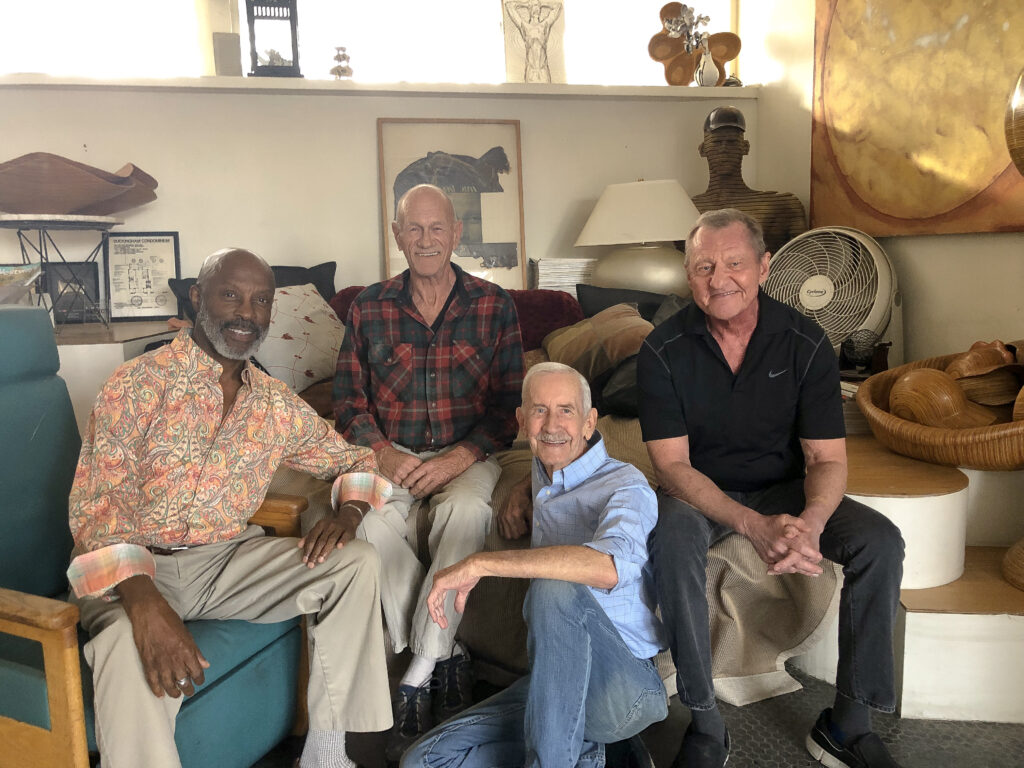
Bill Lyons, Jessay Martin, Robert Reeves and Mick Peterson, whose ages range from their late 60s to their 70s, have lived through the lows and highs of our community and survived to tell the tale, quip, laugh, dress up, dress down, and spread gay love. Right now, they’re on a high. It seems like finally the world is ready to accept that gay men live long and decent lives full of love, purpose, and good humor.
I caught up with the unlikely influencers during the height of the pandemic to find out how this unlikely reign over over those who scroll and swipe and like began, and whether or not there is a larger purpose to their Insta-fame.
I’m curious about many things but I start with how they all met.
“It’s been a long process,” says Robert, “but I met Bill and I first met back in the 1980s when we both lived in San Francisco. And then we just happened to both move to the desert. And I moved here in 1990 and Bill in 2003 and shortly after Bill moved here, we just accidentally reconnected and have maintained a good friendship ever since. And then I started renting out rooms in my house in 2013, and Mick was the first one who moved into the house as a renter, and he’s been here ever since. And then Jessay moved across the street in about 2013, and then at first we were just neighbors and would occasionally say hi and then eventually Jessay was brought into the group.”
It’s uncannily like The Golden Girls—except in Palm Springs. When I ask what is the magnetic pull of Palm Springs for gay men, Jessay busts out in a peal of laughter.
“It’s just like when Palm Springs started in the ’20s and ’30s,” explains Bill. “Movie stars would come down here and have clandestine meetings with one another [because of] its proximity to Hollywood. And when it gets June gloom in L.A., there’s no more perfect place to come to than the desert. So it attracted a lot of people, plus a lot of people in San Francisco who bought a Victorian for two hundred thousand sold it for two million, they could sell their place and come down here, and have their choice of anything. So it’s just been a mecca, and I think being so close to Hollywood has really helped them along.”
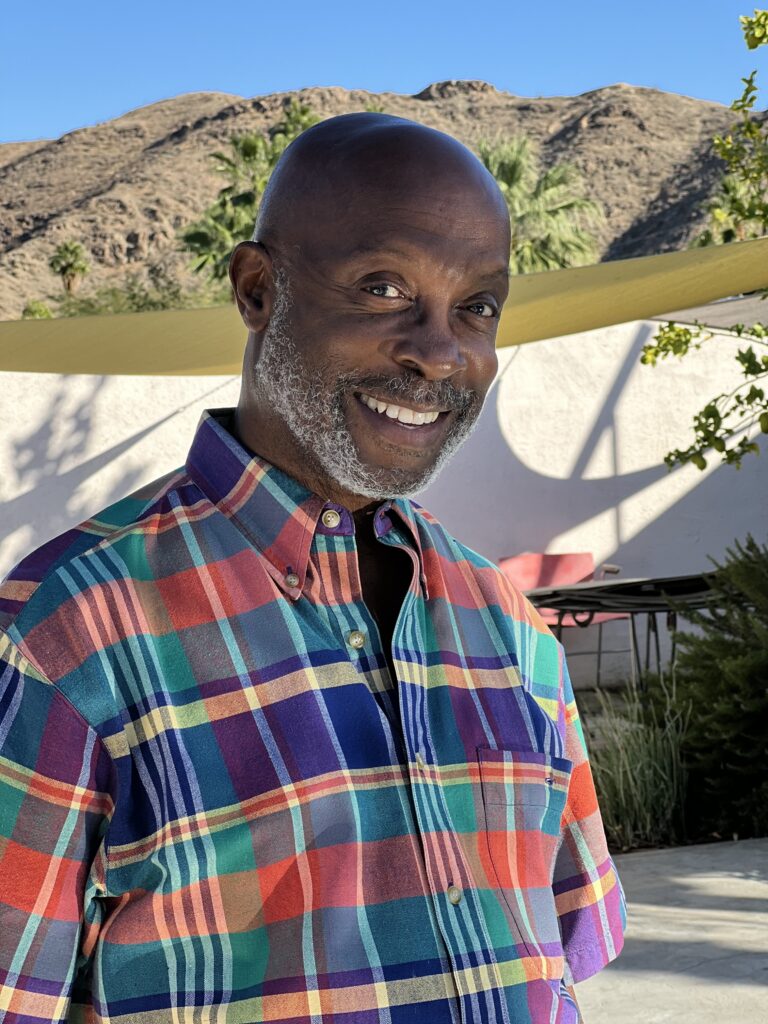
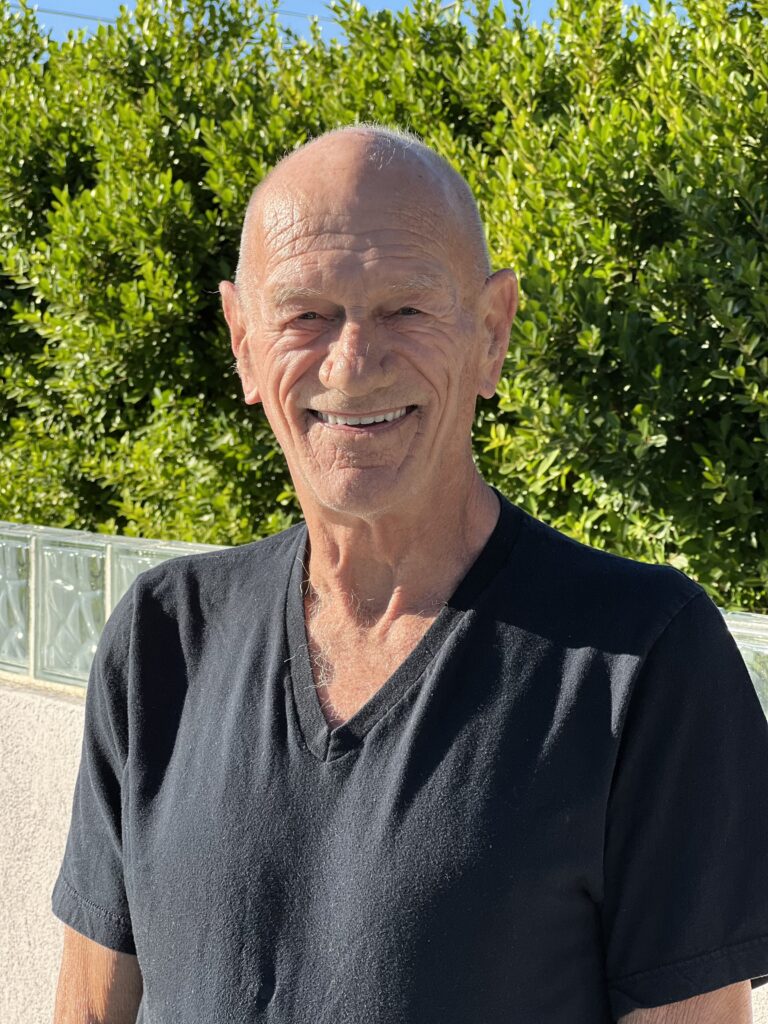
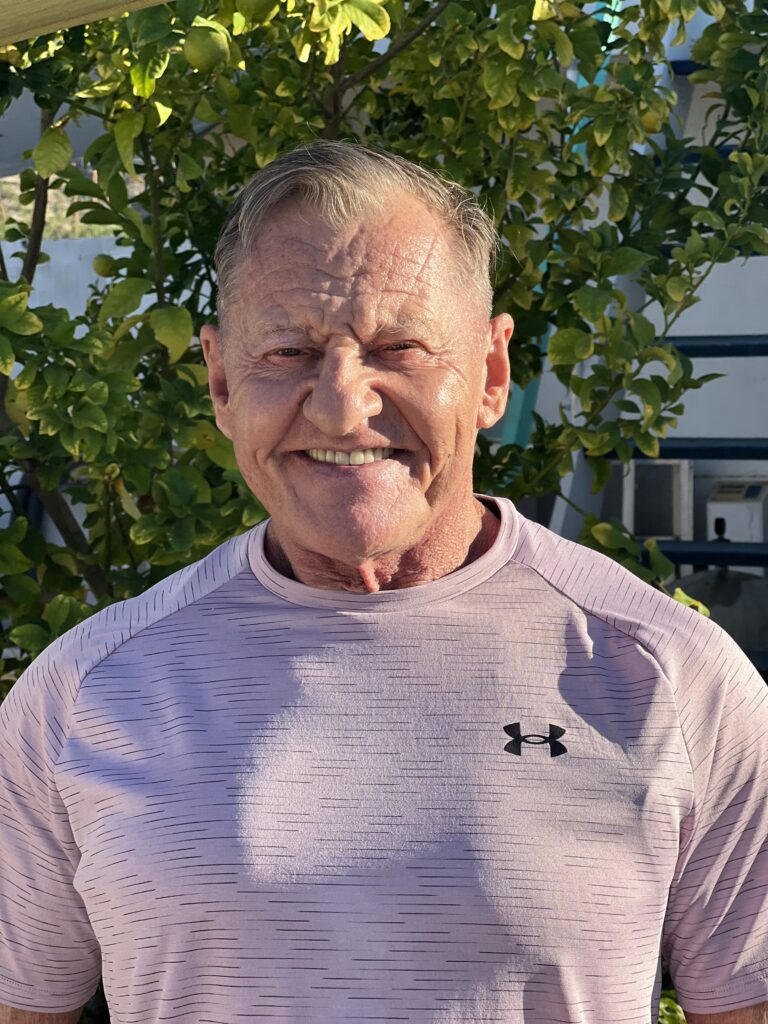
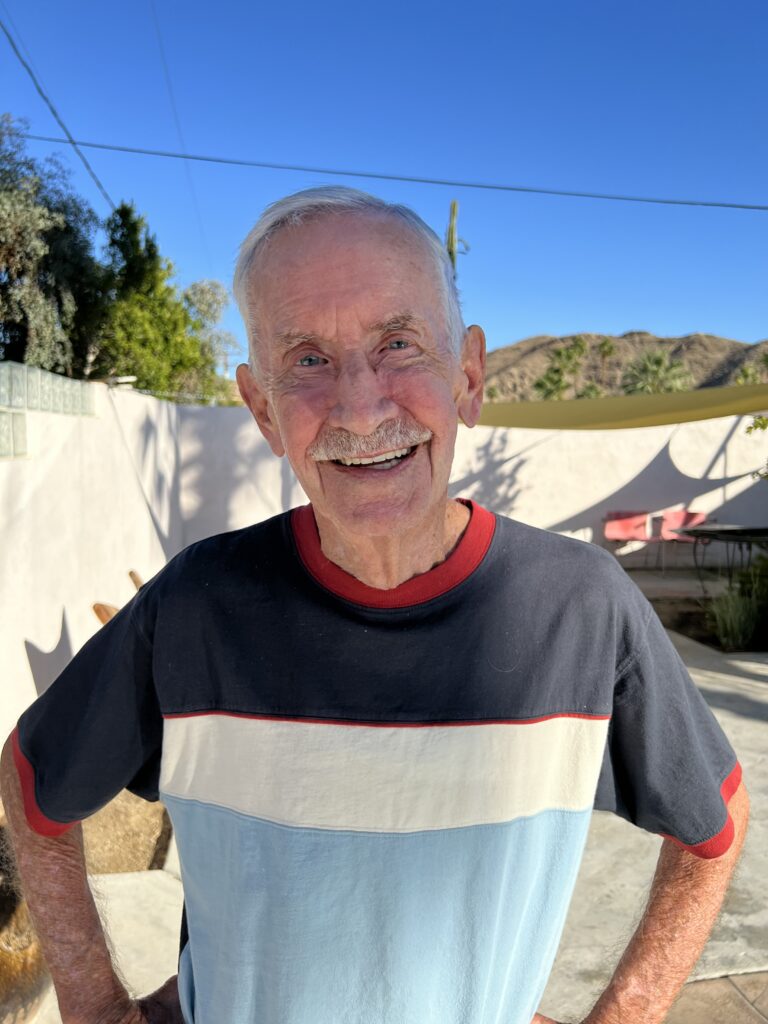
Mick adds: “You know, I lived in Hollywood for 30 years, I used to come out here back in the late ’70s and early ’80s, we would rent a house and it was a place where you could just kind of relax and get away from the city. And at that time, really, as far as a gay resort would be concerned in California, that was really in Laguna Beach, California. And then in the ’80s, people just started leaving Laguna and started buying up property here.
“In those days, Palm Springs was not a welcoming place for gay people; the police department was vociferously anti-homosexual. And so really, the bars and the restaurants for LGBTQ people were here in Cathedral City. And it wasn’t until when Sonny Bono became mayor of Palm Springs and began to welcome gay people into the city, and sort of turned the police department from homophobic to homo- friendly, that really LGBTQ people started moving in and buying properties really in the ’90s. You know, the ’80s recession really tore into this area and also the HIV epidemic. And so a lot of people were selling their properties and then a lot of other people, like Bob, who wanted to come down to get away from his job to retire.”
It’s friendly, the climate is conducive to relaxing, and it’s inter-generational: there are the old gays and also the younger generation. But the Old Gays also acknowledge the wider problem of agism in America. Mick says, “In my generation, you know, the last thing you wanted to be was old. I mean, Palm Springs would have had the reputation of being where the elephants go to die. But with the Millennials and the Gen Xers coming out here in the middle of summer or going to Coachella festivals and things like that, they like the desert, but they also are showing some real interest in us.”
So much so, that Mick estimates a third of his interest on his dating app are from guys under 34. “There’s a fascination. I think it’s because the connection is there because they don’t have a lot of role models.”
Bill agrees with Mick. “I just recently made an entree into social media on a dating site and over half the guys that send me messages on that are under under 35. And that really shocked me. And from all over the country also.”
“I have a much better understanding of young gays now and an appreciation for what they’re doing.”
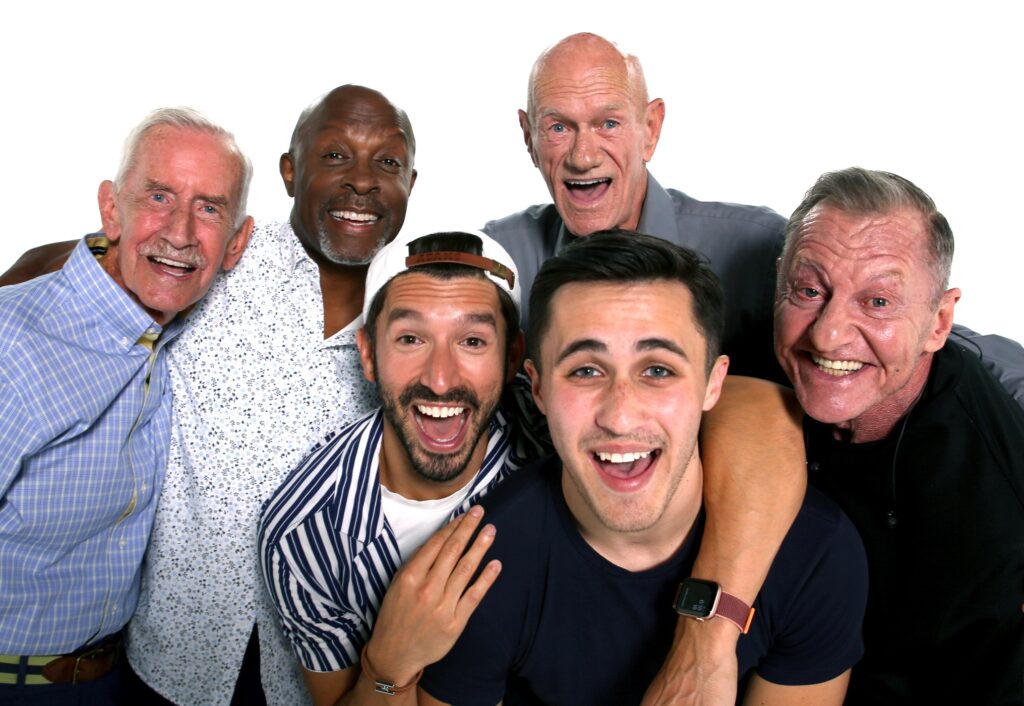
As influencers, one of the most frequent comments The Old Gays get is: I didn’t think old gays existed. Which is to say they either didn’t survive themselves, or they didn’t survive society; or they didn’t survive the AIDS epidemic.
Robert elaborates: “A lot of younger people have the feeling that the whole generation was wiped out by HIV, and they’re kind of surprised to see active people our age.”
Bill blames advertising for the invisibility of old gays. “Much of our media is advertising driven, many of the most important markets for advertisers are those with disposable incomes. And that’s the last thing you think about with somebody who’s, you know, nearing retirement. They’re on a fixed income and they don’t buy stuff.”
And how wrong that is because old gays buy stuff. As we all know. Old lesbians do, too.
In terms of the big, hidden issues for our gay elders, Jessay wishes to highlight nursing home facilities. “We have we have them, but there aren’t a lot of gay-run ones. And there’s so much room for that.”
To focus just on how a generation segues into retirement and their final years is not the point of this assignment, nor of The Old Gays. Jessay continues: “We’re here to open the doors and to make it easier for our younger people.”
Interesting side note: The most popular videos made by The Old Gays have to do with their pasts about when they were young. But the whole enterprise began in 2017 when they were just talking to each other and they made a series of videos for Grindr in 2018. And then Instagram, and then Tik Tok and it just exploded in 2021.
Their objective is to have fun, but to also provide positive role model guidance for the younger LGBTQ generation. “And we want to try to share our experiences and our knowledge of what we’ve been through, the battles we’ve had to fight, that has brought us to where we are,” says Bill.
They want to bring joy into people’s lives. To see so much pain and despair in the world and then to see The Old Gays singing and dancing and clowning about. It kind of makes your day, no matter your age.
Jessay says: “You know, I’m finding out that there are people our age who are coming alive and hearing this because they are alone out there. And to me, it is all about the love thing. I was raised with it, I care, and I love giving love and just opening up and being in this has opened me up to the possibilities of life itself and freedom. And I’m not as paranoid as a gay Christian man in this world because I find out that everybody in my circle is loving me because they see Jessay who happens to be a gay African-American man. So it’s just just being yourself and opening up and caring so much.”

Have they gotten any backlash, any trolls?
Not really, they tell me. Mostly, each day brings a new famous follower, such as Oprah. You never know who you are influencing just by being you. That’s one of the upsides about social media.
They care about more issues than just being gay. They care about homeless youth and the need for emergency shelters and group homes. They care about the environment and the decades-long drought experienced by California. But one of the joys of living in California, and in the desert in particular, is that they feel younger living their “third act” out there. Jessay, who is from the South originally, where humidity and societal norms can be oppressive, particularly feels this way.
They have some advice for the young ones:
- Don’t do tattoos.
- Don’t spend so much time on your phones.
- Don’t be so self-involved.
- Think with your head, not with your dick.
When I tell them I had a thought, a question, and I just lost it, they say, “You’re having a senior moment. We understand.”
And this is why we love The Old Gays. They have been there, done that, and yet they are here now. They are here for us as we come through the threshold of our (mis)spent youths into our maturity.
Bit they wouldn’t go back in time and be anything but who they are right now. They wouldn’t trade all their history and all the lessons they’ve learned — not for anything.
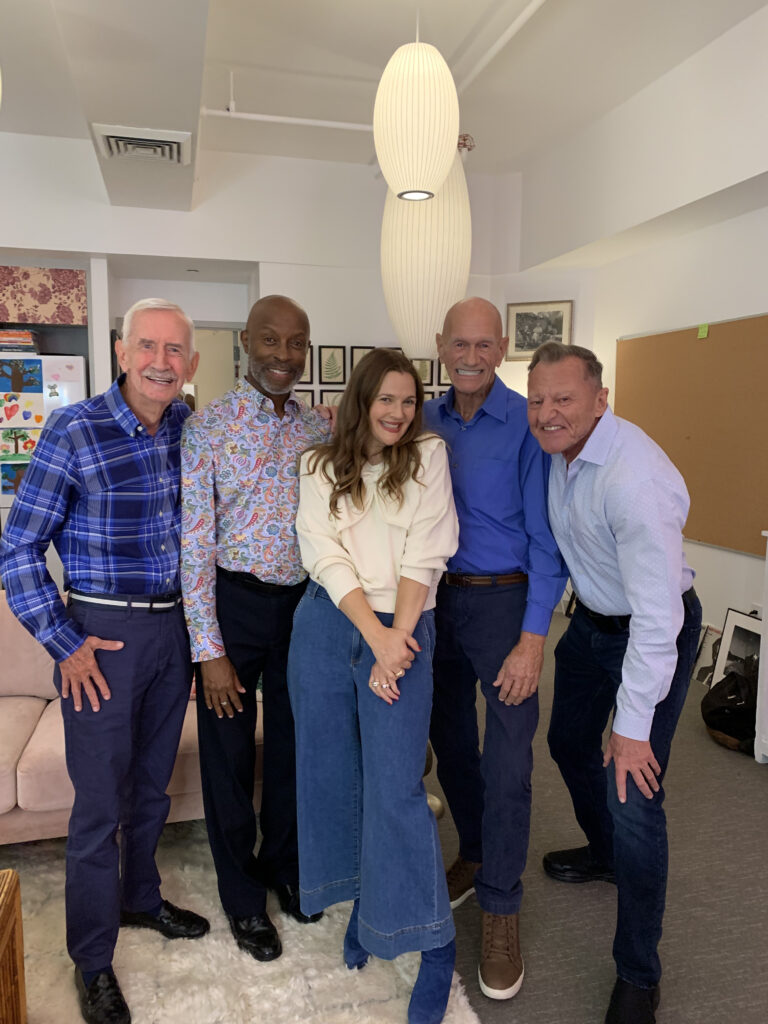
And so I ask them: What’s the best thing about being here now and being this age? What do you like about it so much?
This is their answer: Perspective on life. The joy of living in Palm Springs (Jessay would like it to be more diverse, and fair call, it can feel lonely and there really is a racism problem in the gay community! Literally it’s the White Party). The privilege of being born gay.
The Old Gays’ audience is almost 50 per cent women, and there’s something in that: Women know what’s good. They seek it out. Drew Barrymore knows which way is up. But what about the rest of the culture? Can the mainstream appreciate the fruits of our struggle for equal rights because when the gays fight for equality, they are fighting for the equality of everyone who ever felt different.
“We’ve taken steps,” says Jessay. “We’ve still got a long way to go, I’m thankful for how far we’ve come, but I look forward to continually growing and seeing us evolve into more oneness, I hope, as fellow human beings. I love love so much, and I tear up when I talk about it because it’s a deep thing to me because I grew up with the most wonderful mother in the world that was there and still is here spiritually for me.”
Follow The Old Gays here, you won’t regret it.






